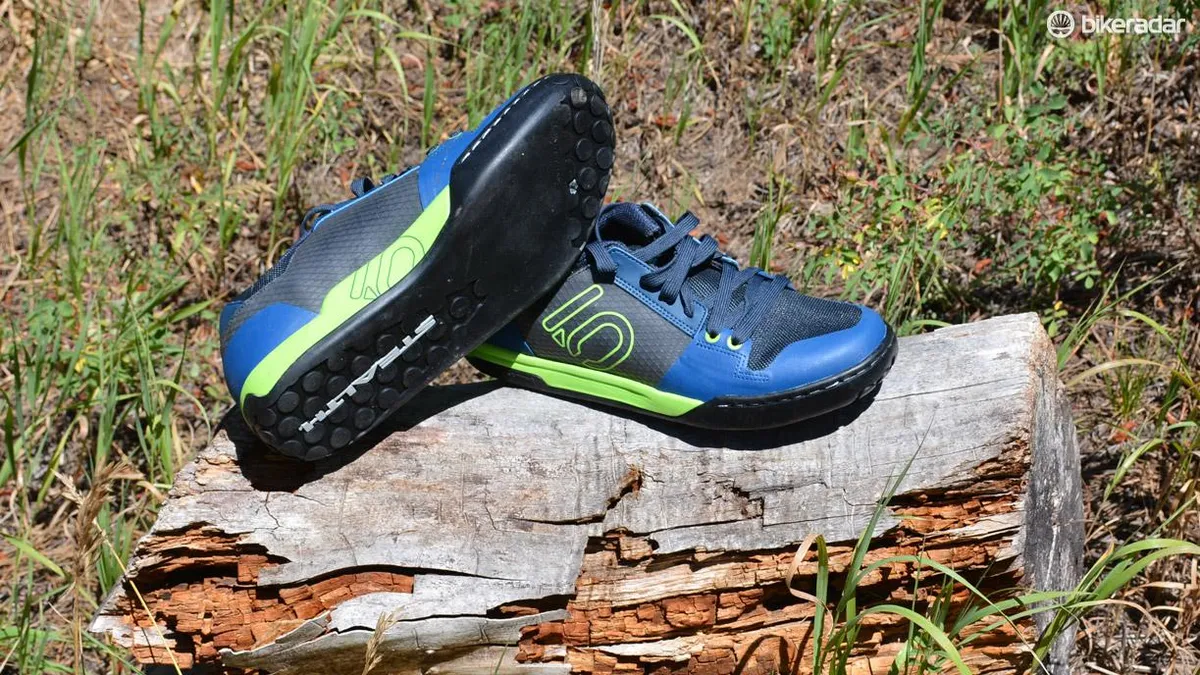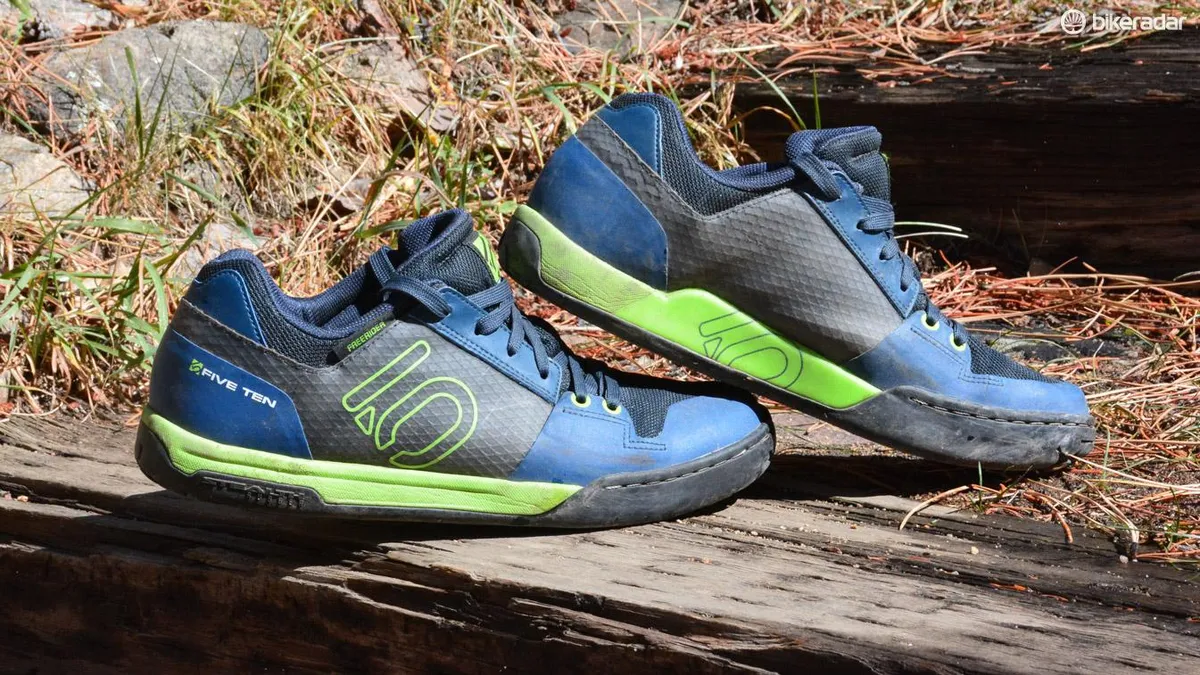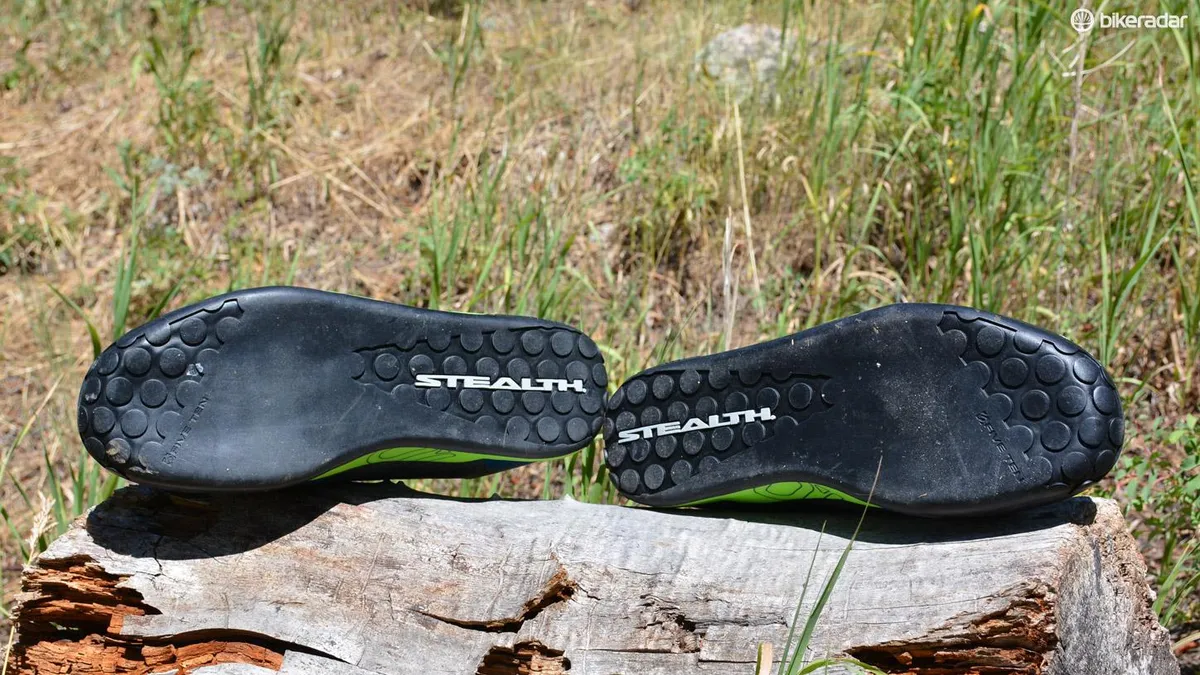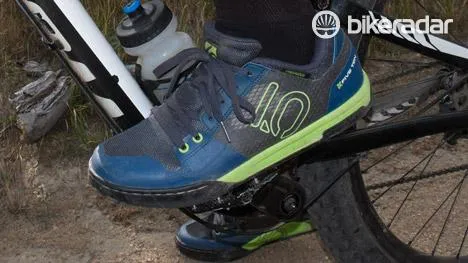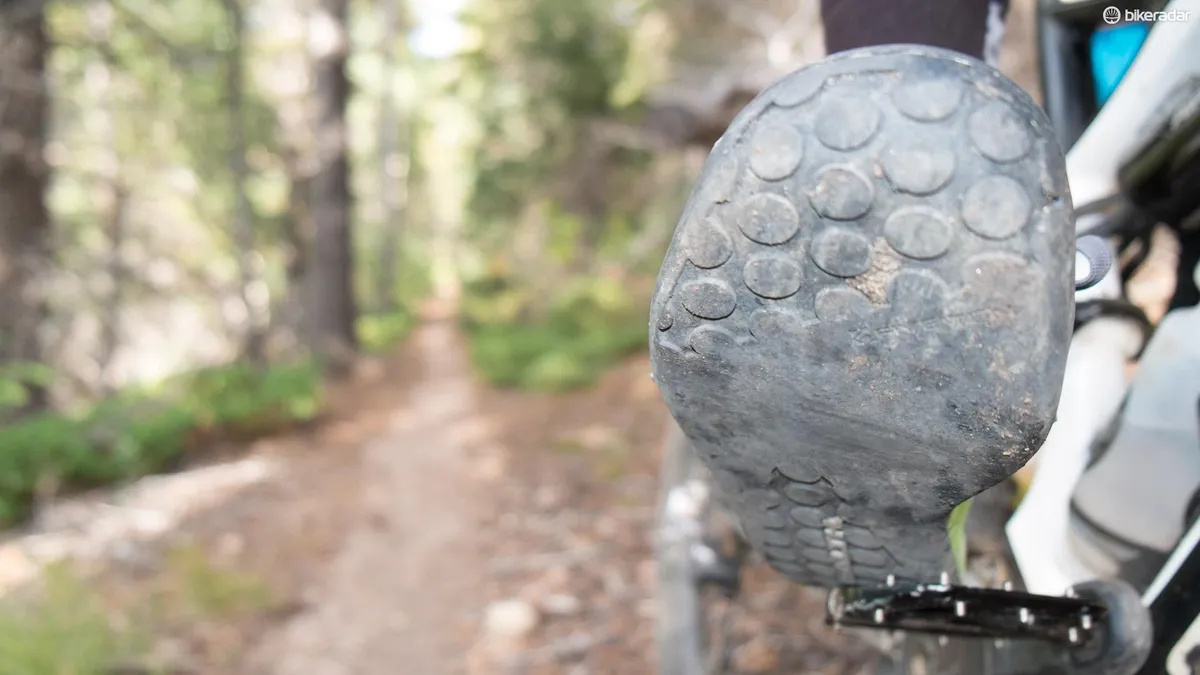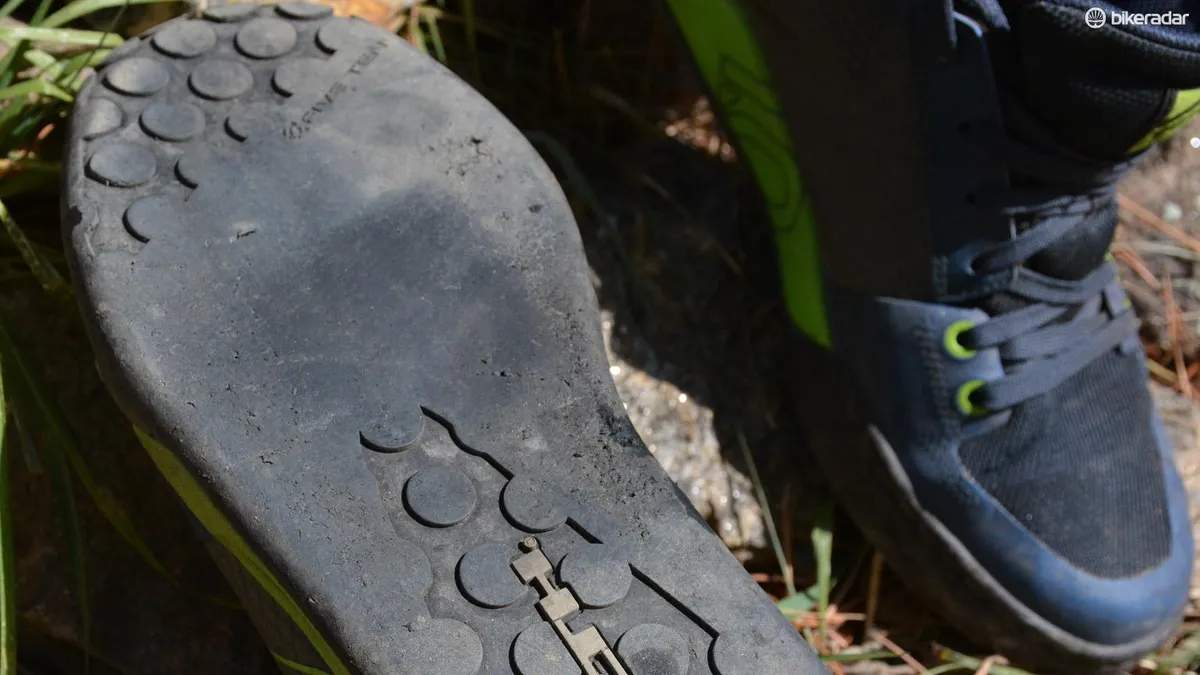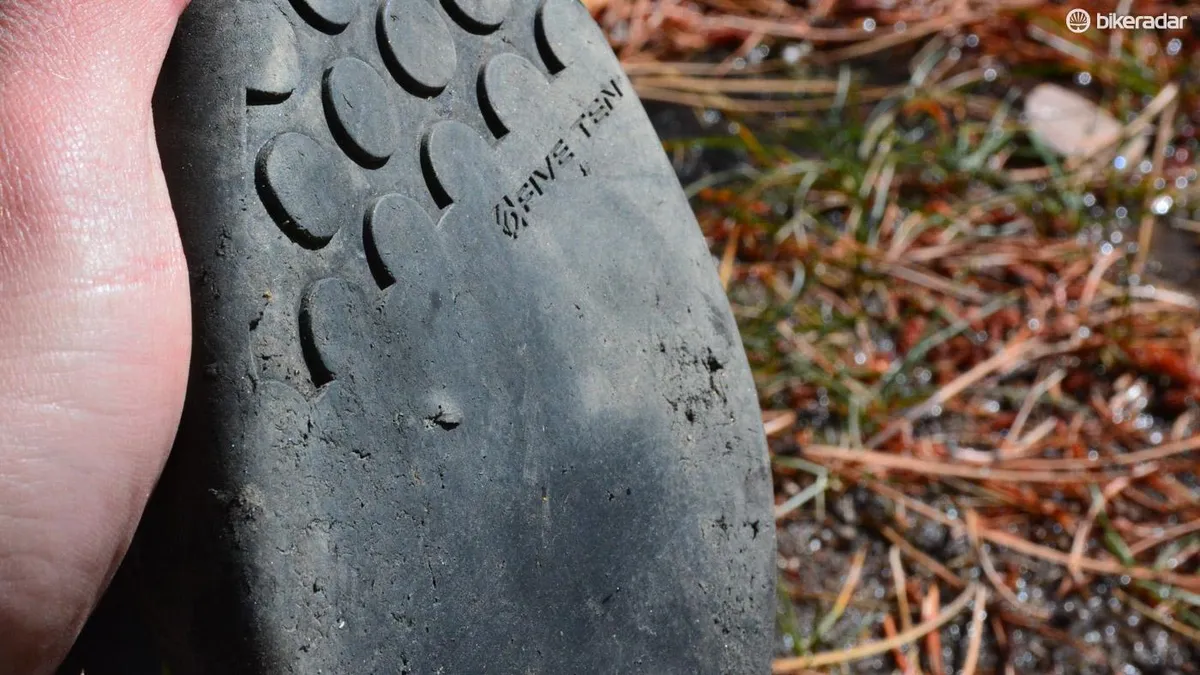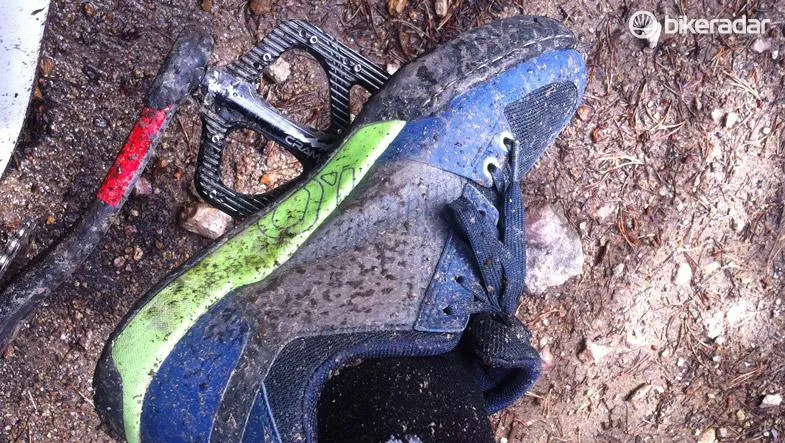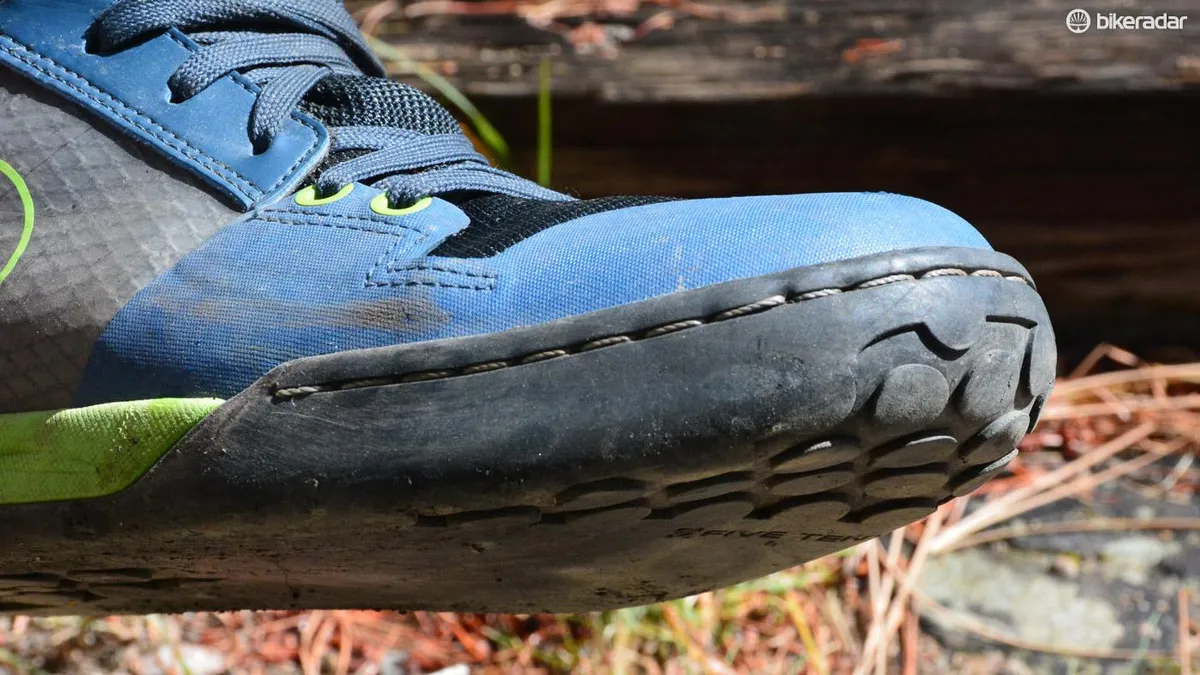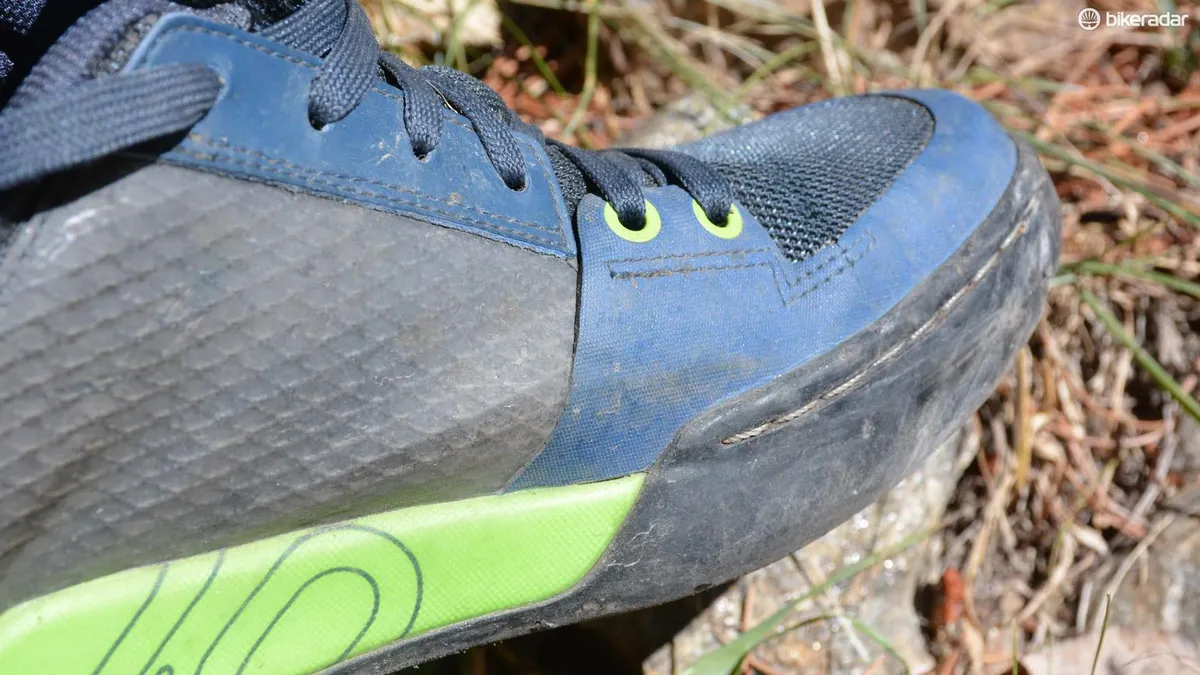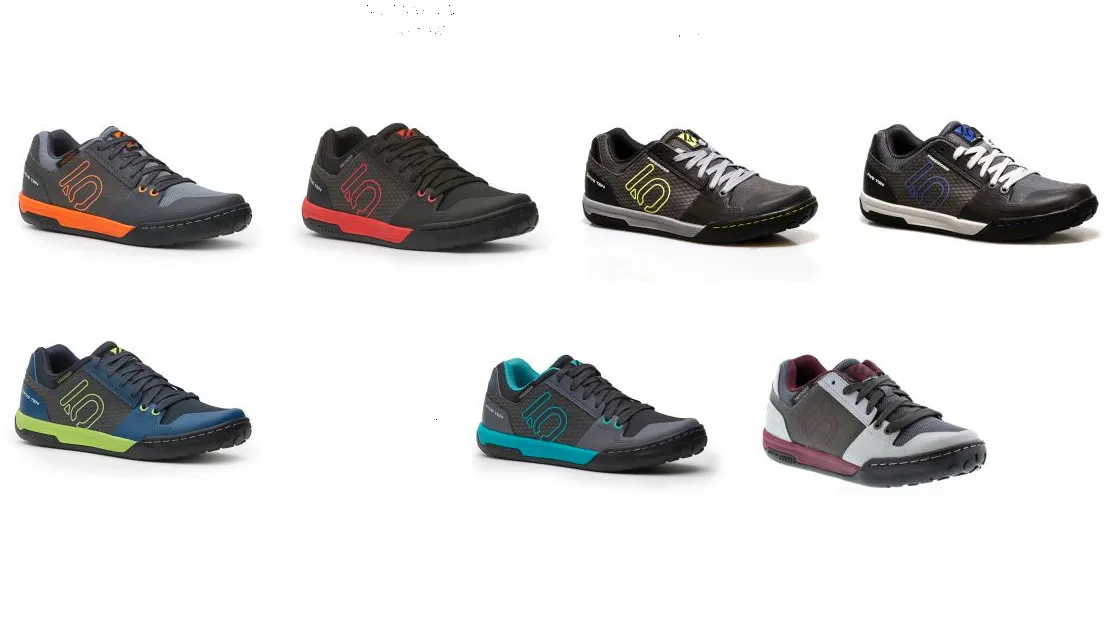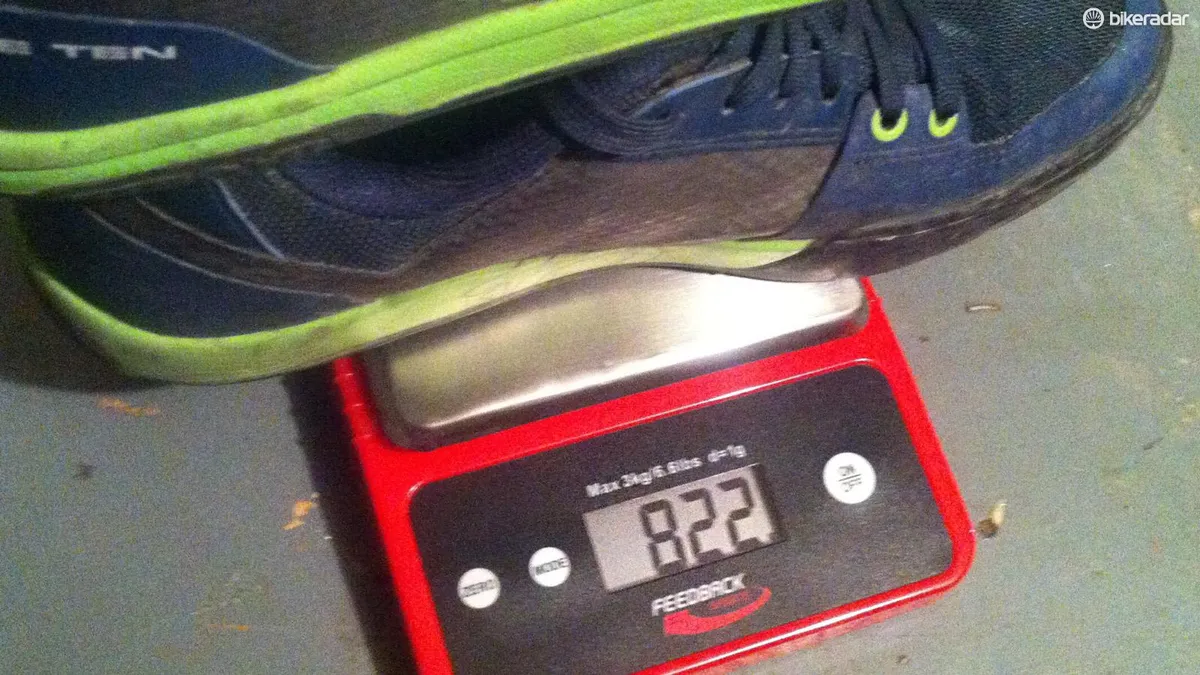Five Ten made its name with rock climbing shoes. Wouldn't you know it, it turns out that the soft, sticky rubber that climbers depend upon to scurry up vertical walls also adheres to flat mountain bike pedals pretty dang well.
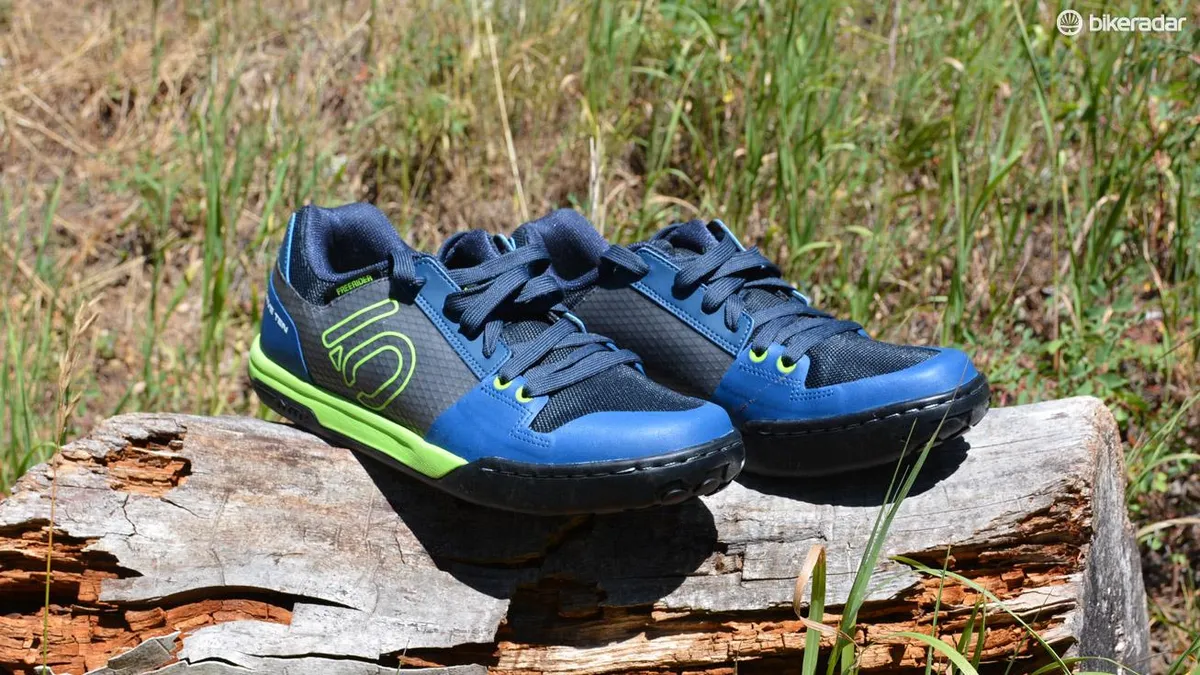
Five Ten Freerider Contact features
- Innovative Contact outsole with Stealth Mi6 rubber
- Lightest Freerider model
- Added toe cap protection
- Abrasion resistant textile and synthetic upper
- Stiff, compression-molded EVA midsole
- Low-profile, performance fit
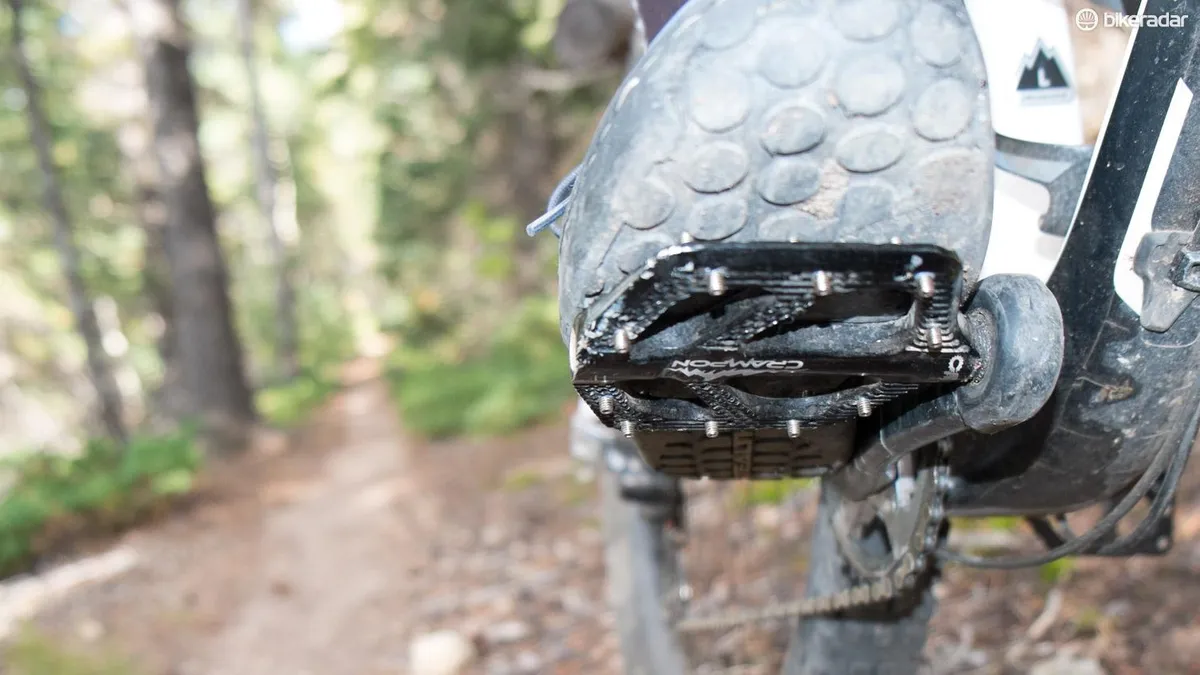
Sticky, but within reason
A quick way to judge a rubber's softness, or stickiness, is to push your thumbnail into the rubber. The deeper it goes, and the longer the impression takes to return to its original form, the softer and/or stickier it is. Doing the thumbnail test on the Freerider Contacts highlights that the Mi6 soles will be pretty much glued to most flat pedals.
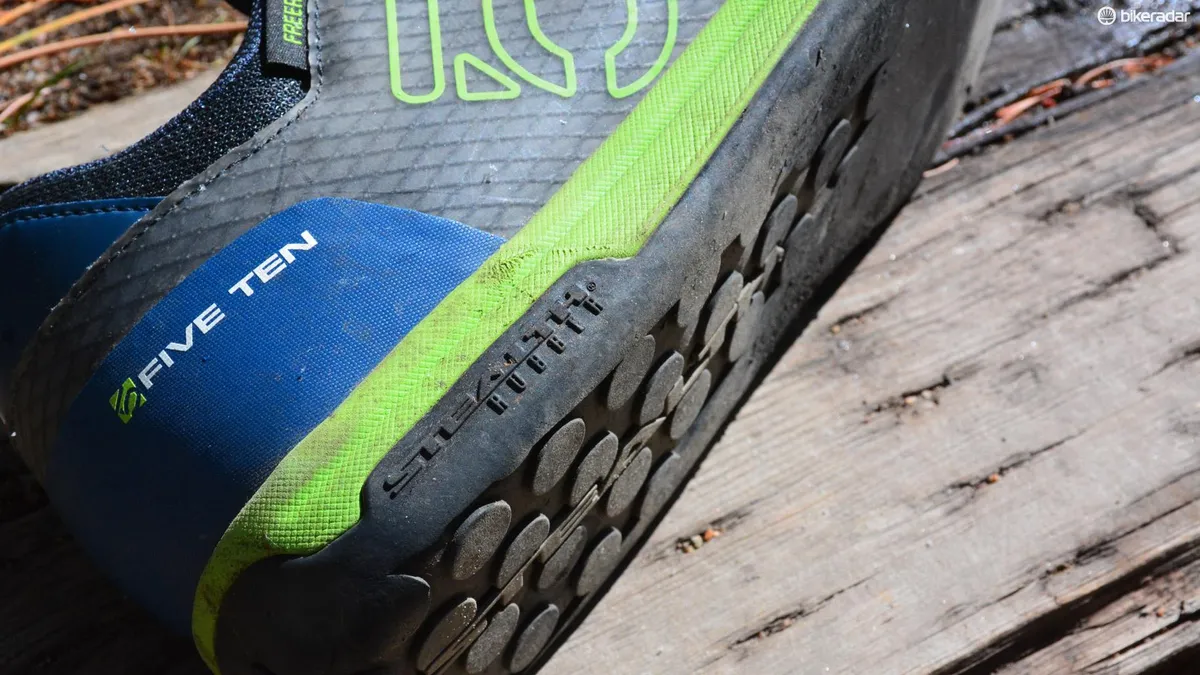
Off the bike, hiking was just fine until it got wet and muddy where the lack of tread made traction real slippery, real quick. But outside of any wet conditions, bike-pushing action was actually very good. That's because the soles do have a bit of give, especially around the toes, which nicely pairs up with where the tread starts again.
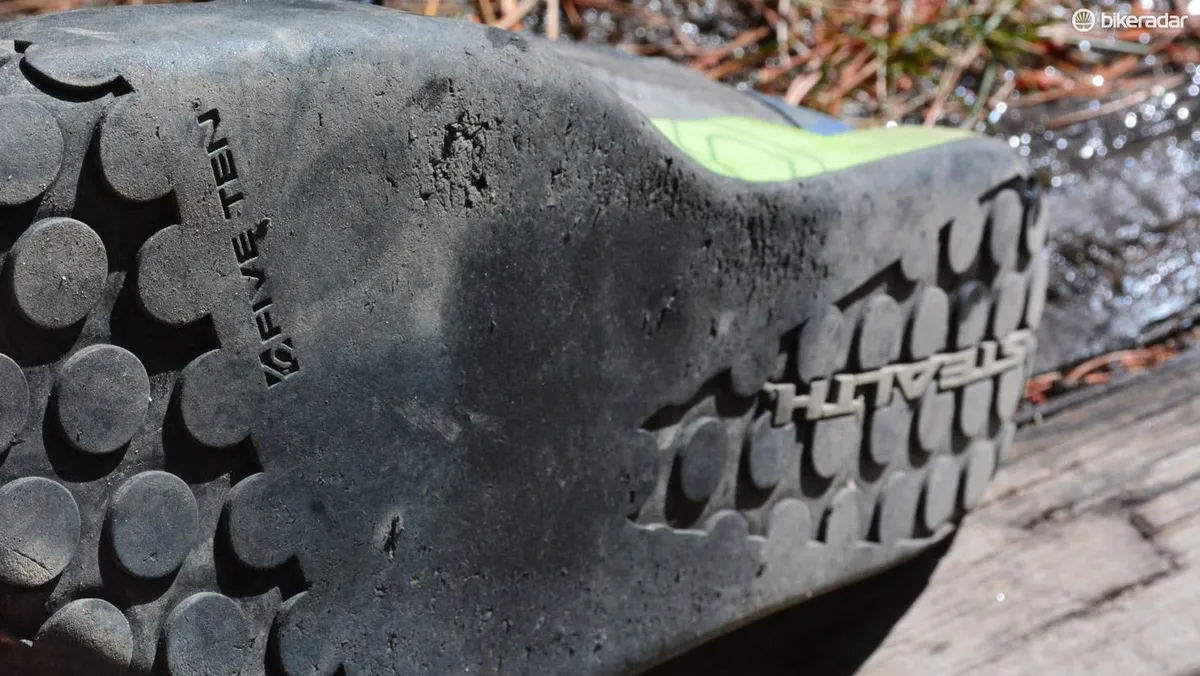
Made for rowdy trail riding
The Mi6 sticky rubber soles provided the type of pedal connection expected from Five Ten, just a bit less tenacious. Whereas Five Ten's fully treaded soles engage the pedal pins more securely, the Freerider Contacts allowed a bit easier foot adjustment. I appreciated this as I tend to move my foot around depending on what I'm riding: pedal under the arch when climbing, toes all the way back when manualing or bunny hopping, and foot on the edge of the pedal when cornering.
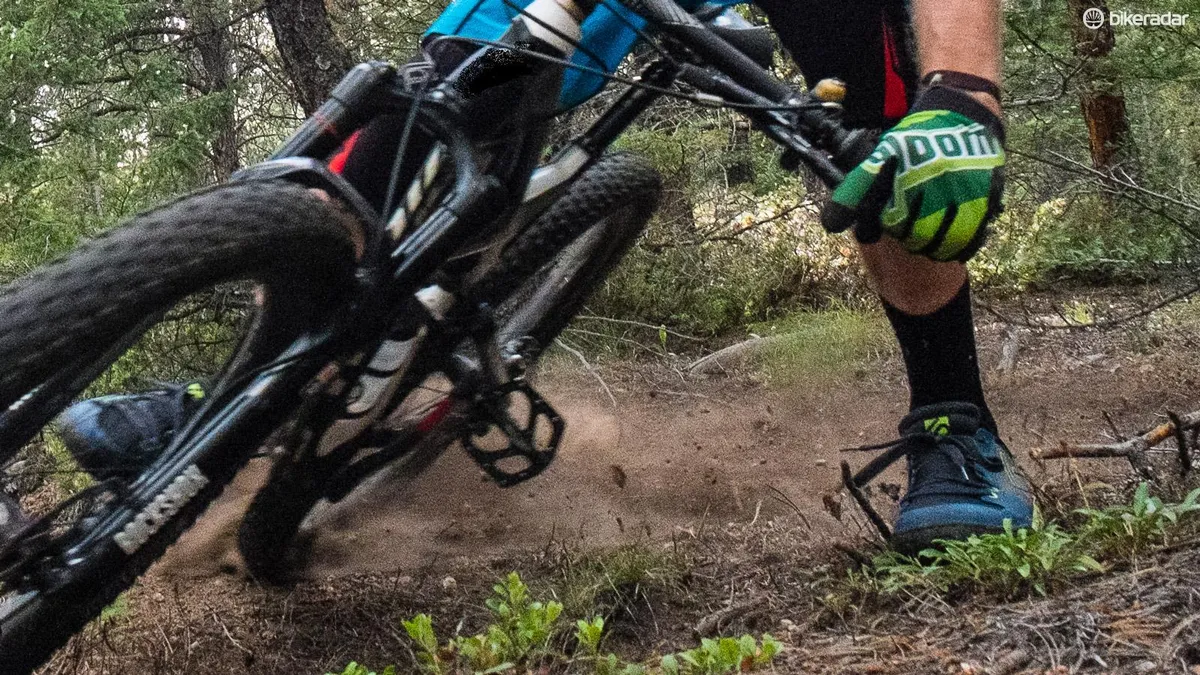
I really appreciated the additional sole stiffness as one of main gripes with my other Five Tens was how flexy they were. Unlike my previous shoes which fatigued my feet on big riding days, the Freerider Contacts deliver a worthy level of support. Additional riding support should also be credited to the Mi6 rubber. Not only is it soft, it's slow rebounding so once meshed with the pedals' pins it does a noticeable job of damping vibrations and the sting of big hits. Of course, this sole stiffness and mild cushioning does take a bit feedback away from the pedals, but on most rides, especially longer rides, it's a very worthwhile trade-off.
I did manage to ride a few wet, rainy days, and am pleased to report less water absorption. Five Ten's synthetic materials don't take on water like a sponge. Durability all around has proven to be very good, with only a few knicks and scrapes remaining after some not-so-delicate hits. All the stitching has faired well, too.
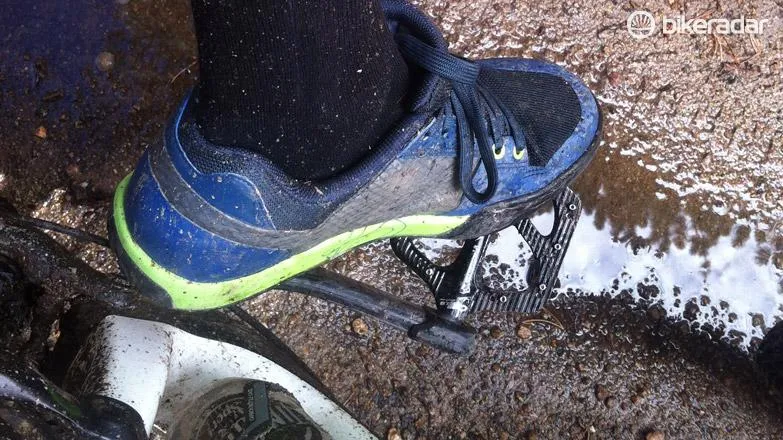
Slipped pedals resulting in checking to see if my lower leg was still attached, were few and far between. They did happen, but it was because of my riding, not the shoes lack of grippiness. Other than the compromised wet hiking traction, the only other note is that the Freerider Contacts did seem a bit narrow, but of course your mileage may vary.
Five Ten Freerider Contact verdict
The Freerider Contact shoes strike an incredible balance between weight, durability and maneuverability. They're certainly not as grippy as other Five Tens, nor as flexy, but that, combined with the respectable weight, is what makes them so ideal for all-mountain and enduro flat pedal riders.
Sure, if you want all-out grip, Five Ten's Impact VXi or Sam Hill shoes are the ticket. But if you like moving your feet around on the pedals a bit, or your knees demand some float, the Contact's lack of tread nail that middle zone so perfectly.
